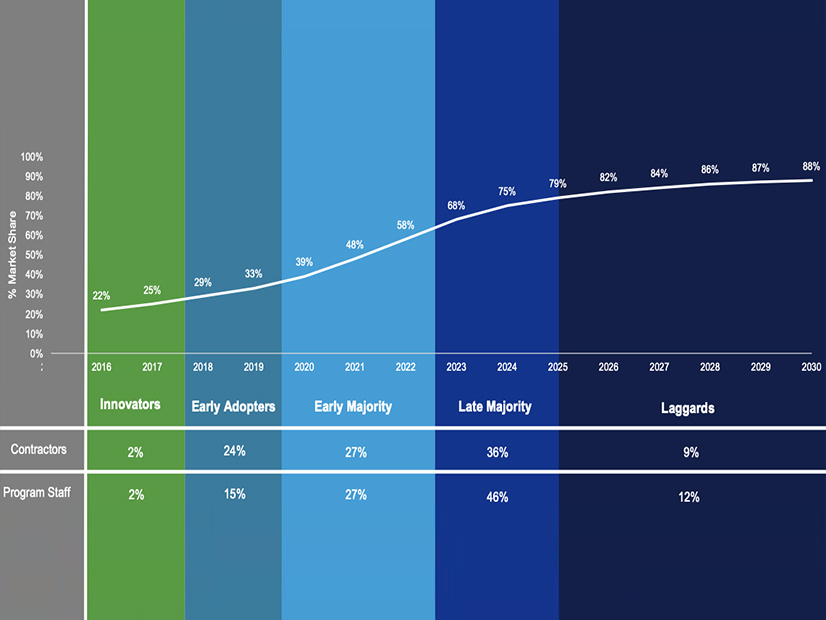Energy efficiency upgrades in the commercial and industrial sector have made LED lighting so common that additional upgrades require more than just swapping old bulbs for new technology, according to a report DNV released Feb. 20.
DNV worked with 12 power industry participants from around the country and interviewed 112 program implementers, vendors, manufacturers and lighting contractors to develop a bottom-up stock turnover model for its study, according to the report.
“Lighting has long been a staple of energy efficiency programs, providing a low-cost and -effort means to reduce energy consumption for homes and businesses. However, the widespread availability and adoption of LEDs has eroded these savings potential,” DNV’s Richard Barnes said in a statement. “This study outlines new ways that lighting can be used to provide customers and utilities with deeper energy savings while using established and effective utility energy programs.”
The C&I lighting market has reached the “late majority stage” on average around North America, representing 60% of lighting fixtures and 75% of national sales.
“While a large number of facilities across North America still have legacy technologies in place, upgrading lighting in those facilities will require program adaptations to target smaller buildings in harder-to-reach communities where much of the remaining potential lies,” the report says.
Outside of getting to those lagging areas, the report lists six areas that utilities and efficiency programs should focus on to get more efficiency as the market becomes saturated with LEDs.
The first is to replace older LEDs with newer, more efficient models that produce more lumens per watt; that would save 1.28 million MWh. The data show a 20% efficiency improvement between baseline LEDs now and the most efficient products over the next five years.
Advanced lighting controls, including network lighting and luminaire-level lighting without networking, would save 1.9 million MWh. The savings tend to be bigger in larger buildings with larger lighting demand.
While past efforts have focused on switching out the lights themselves with LEDs, swapping out the entire ceiling grid with new products could save 545,381 MWh. Such complete redesigns typically require hiring a “lighting designer,” and the feasibility depends on customer-to-customer, site-specific conditions.
“This differs from a one-for-one replacement of fixtures which often requires much less labor but cannot realize as much savings due to the persistence of improper lighting levels which only redesign can address,” the report said.
Another option is to make it so lighting can also be used for demand management by installing controls that can dim or turn off lights based on grid conditions and power prices, which would save more money than megawatt-hours.
Deploying UV lighting technology would help to sterilize the air in commercial buildings, which would lead to savings from HVAC systems.
Finally, the report recommends tunable lighting that allows modulations to the spectral output or color temperature independently from the total lumen output of lights. That offers potential health benefits from human-occupied buildings and can achieve savings in the afternoon and evening hours. It also can benefit marijuana grow houses, the report says.




